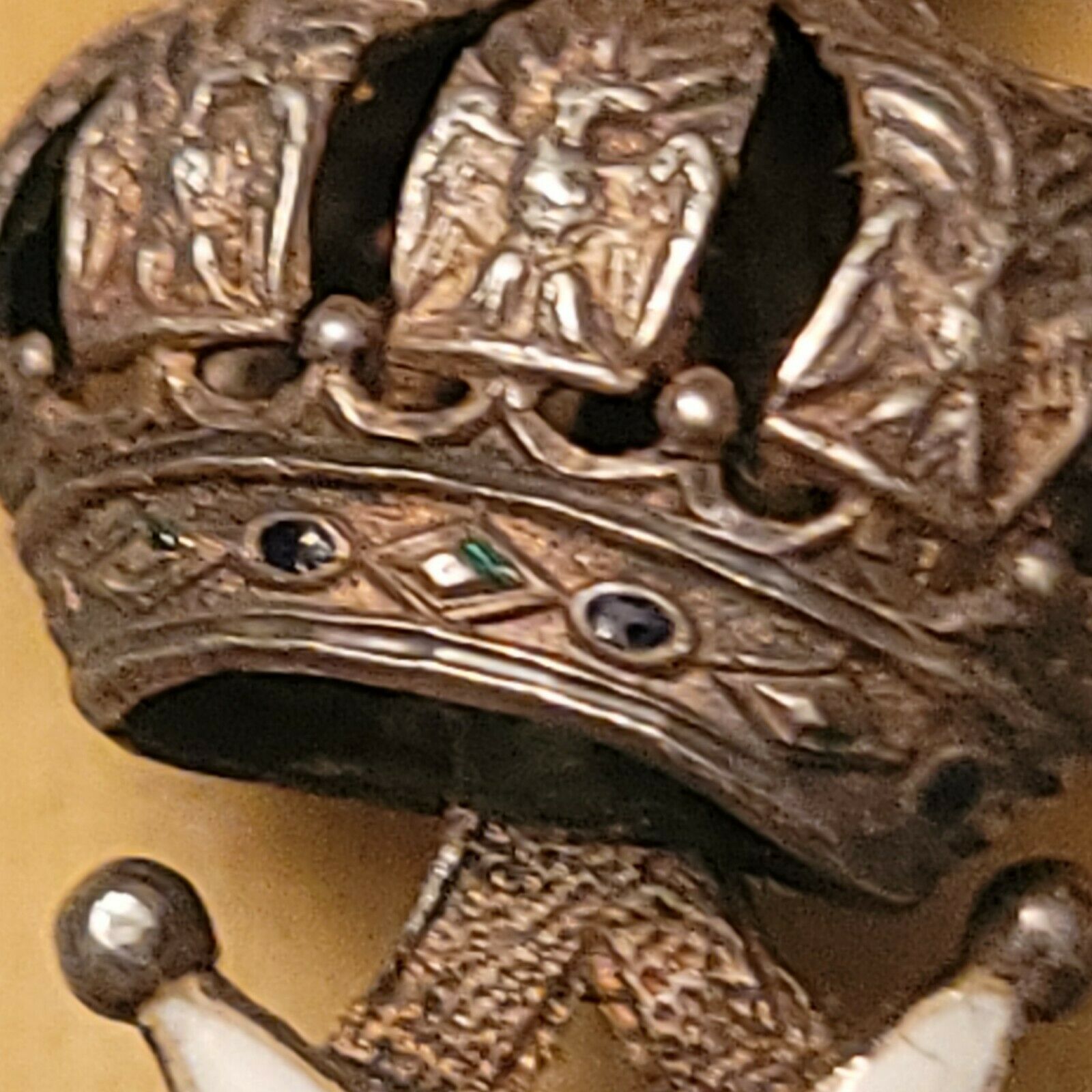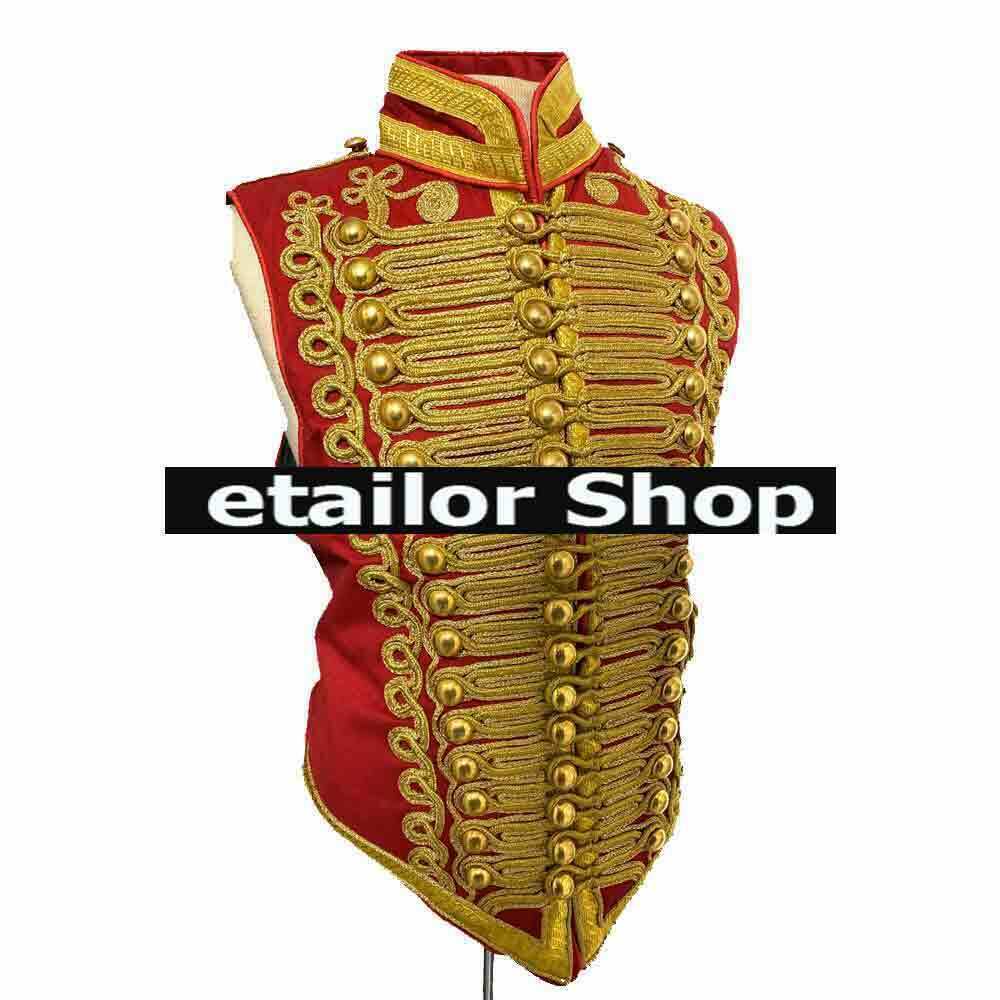-40%
Legion of Honour 2nd Empire Rare Medal--SEE STORE MANY WW1 -WW2 FEENCH MEDAL
$ 142.55
- Description
- Size Guide
Description
PLEASE FOLLOW OUR E BAY STORESEE ALL PICS
SALE
SEE OUR STORE
PLEASE READ WHOLE ADD
SEE STORE !!!!
Second Empire
[
edit
]
An Imperial crown was added. During
Napoleon III
's reign, the first American was admitted:
Thomas Wiltberger Evans
, dentist of Napoleon III.
Second French Empire
From Wikipedia, the free encyclopedia
Jump to navigation
Jump to search
Not to be confused with
French colonial empire
.
Coordinates
:
48°49′N
2°29′E
French Empire
Empire français
1852–1870
Flag
Imperial Coat of Arms
Anthem:
Partant pour la Syrie
[1]
(de facto)
[2]
[3]
"Departing for Syria"
The Second French Empire in 1862
Capital
Paris
Common languages
French
Religion
Roman Catholicism
(
state religion
)
Calvinism
Lutheranism
Judaism
Sunni Islam
(in Algeria)
Demonym(s)
French
Government
Unitary
Bonapartist
absolute monarchy
under a
military dictatorship
(1852–1858)
Unitary
Bonapartist
absolute monarchy
(1858-1869)
Unitary
parliamentary
constitutional monarchy
(1869–1870)
Emperor
• 1852–1870
Napoleon III
Cabinet Chief
• 1869–1870
Émile Ollivier
• 1870
Charles de Palikao
Legislature
Parliament
•
Upper house
Senate
•
Lower house
Corps législatif
Historical era
New Imperialism
•
Coup of 1851
2 December 1851
•
Constitution adopted
14 January 1852
•
Franco-Prussian War
19 July 1870
•
Battle of Sedan
1 September 1870
•
Republic proclaimed
4 September 1870
Currency
French franc
Preceded by
Succeeded by
French Second Republic
Kingdom of Piedmont-Sardinia
French Third Republic
The
Second French Empire
(
French
:
Second Empire
; officially the
French Empire
, French:
Empire français
), was the 18-year
Imperial
Bonapartist
regime of
Napoleon III
from 14 January 1852 to 4 September 1870, between the
Second Republic
and the
Third Republic
, in France.
Historians in the 1930s and 1940s often disparaged the Second Empire as a precursor of
fascism
.
[4]
That interpretation is no longer promulgated, and by the late 20th century they were celebrating it as leading example of a modernising regime.
[5]
[6]
Historians have generally given the Empire negative evaluations on its foreign policy, and somewhat more positive evaluations of domestic policies, especially after Napoleon III liberalised his rule after 1858. He promoted French business and exports. The greatest achievements came in material improvements, in the form of a grand
railway network
that facilitated commerce and tied the nation together and centered it on
Paris
. It had the effect of stimulating economic growth, and bringing prosperity to most regions of the country. The Second Empire is given high credit for the rebuilding of Paris with broad
boulevards
, striking public buildings, and very attractive residential districts for upscale Parisians.
In international policy, Napoleon III tried to emulate
his uncle
[
dubious
–
discuss
]
, engaging in numerous imperial ventures around the world as well as several wars in Europe. The beginning of his reign saw French victories
in Crimea
and
in Italy
, gaining
Savoy
and
Nice
in the process. Using very harsh methods, he built up the French Empire in
North Africa
and in
Southeast Asia
. Napoleon III also sought to impose the
Second Mexican Empire
and bring it into the French orbit, but this ended in a
fiasco
. He badly mishandled the threat from
Prussia
, and by the end of his reign, Napoleon III found himself without allies in the face of overwhelming German force.
[7]
His rule came to an end during the
Franco-Prussian War
, captured by the
Prussian army
at
Sedan
in 1870, dethroned by French republicans, and later died in exile in 1873 while living in the
United Kingdom
.
History
[
edit
]
Part of
a series
on the
History of
France
show
Ancient
show
Middle Ages
show
Early modern
show
Long 19th century
show
20th century
Timeline
France portal
v
t
e
Coup of 1851
[
edit
]
Main article:
French coup d'état of 1851
On 2 December 1851,
Louis-Napoléon Bonaparte
, who had been elected President of the
Republic
,
staged a coup d'état
by dissolving the
National Assembly
without having the constitutional right to do so. He thus became sole ruler of France, and re-established universal suffrage, previously abolished by the Assembly. His decisions were popularly endorsed by
a referendum
later that month that attracted an implausible 92 percent support.
[8]
At that same referendum, a
new constitution
was approved. Formally enacted in January 1852, the new document made Louis-Napoléon president for 10 years, with no restrictions on re-election. It concentrated virtually all governing power in his hands. However, Louis-Napoléon was not content with merely being an authoritarian president. Almost as soon as he signed the new document into law, he set about restoring the empire. In response to officially inspired requests for the return of the empire, the Senate scheduled
a second referendum in November
, which passed with 97 percent support. As with the December 1851 referendum, most of the "yes" votes were manufactured out of thin air.
[9]
The empire was formally re-established on 2 December 1852, and the Prince-President became "Napoléon III, Emperor of the French". The constitution had already concentrated so much power in his hands that the only substantive changes were to replace the word "president" with the word "emperor" and to make the post hereditary. The popular referendum became a distinct sign of
Bonapartism
, which
Charles de Gaulle
would later use.
[9]
Early reign
[
edit
]
The official declaration of the Second Empire, at the
Hôtel de Ville, Paris
on 2 December 1852
With almost dictatorial powers, Napoleon III made building a good railway system a high priority. He consolidated three dozen small, incomplete lines into six major companies using Paris as a hub. Paris grew dramatically in terms of population, industry, finance, commercial activity, and tourism. Working with
Georges-Eugène Haussmann
, Napoleon III spent lavishly to rebuild the city into a world-class showpiece.
[10]
The financial soundness for all six companies was solidified by government guarantees. Although France had started late, by 1870 it had an excellent railway system, supported as well by good roads, canals and ports.
[11]
Napoleon, in order to restore the prestige of the Empire before the newly awakened hostility of public opinion, tried to gain the support from the Left that he had lost from the Right. After the return from Italy, the general amnesty of 16 August 1859 had marked the evolution of the absolutist or authoritarian empire towards the liberal, and later parliamentary empire, which was to last for ten years.
Legion of Honour
From Wikipedia, the free encyclopedia
Jump to navigation
Jump to search
"Legion of Honor" redirects here. For other uses, see
Legion of Honor (disambiguation)
.
National Order
of the Legion of Honour
Ordre national de la Légion d'honneur
Chevalier
(
Knight
)
medal
insignia
Awarded by
France
Type
Order of merit
Established
19 May 1802
Motto
Honneur et patrie
("Honour and Fatherland")
Eligibility
Military and Civilians
Awarded for
Excellent civil or military conduct
delivered, upon official investigation
Founder
Napoleon Bonaparte
Grand Master
President of France
Grand chancelier
Benoît Puga
Classes
1
Grand-maître
67
Grand(s)-croix
314
Grand(s) officier(s)
3,009
Commandeur(s)
17,032
Officier(s)
74,384
Chevalier(s
)
Statistics
First induction
14 July 1804
Precedence
Next (higher)
None
Next (lower)
Order of Liberation
(ceased 24 January 1946)
[1]
Order's
streamer
Grand-croix
Grand officier
Commandeur
Officier
Chevalier
Ribbon bars
of the order
The
Legion of Honour
[a]
is the highest French
order of merit
, both
military
and civil. Established in 1802 by
Napoleon Bonaparte
, it has been retained (and slightly altered) by all later French governments and régimes.
The order's
motto
is
Honneur et Patrie
("Honour and Fatherland"), and its
seat
is the
Palais de la Légion d'Honneur
next to the
Musée d'Orsay
, on the left bank of the
Seine
in
Paris
.
[b]
The order is divided into five degrees of increasing distinction:
Chevalier
(
Knight
),
Officier
(Officer),
Commandeur
(
Commander
),
Grand officier
(Grand Officer), and
Grand-croix
(
Grand Cross
).


















